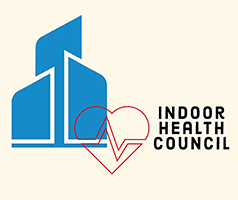Cleaning Chemical Chemistry
Cleaning and disinfecting products often contain chemicals.
There are more than 80,000 chemicals in legal use—many of them in cleaning products—despite limited long-term safety testing, or more importantly, testing in mixtures as they occur indoors.
Short or long-term exposure to even tiny amounts of chemicals may cause skin irritation, asthma, or illness such as cancer from ingredients that interfere with human hormones, aka, endocrine disruptors.
Consider the formula: Risk = Hazard x Exposure.
The risk of using cleaning chemicals* is determined by how hazardous they are and how much we are exposed to them [*For simplicity, we refer to both cleaning and disinfecting products as cleaning chemicals.]
Since EPA-Registered disinfectants are pesticides, treat them as especially hazardous.
While using fewer chemicals is a key part of Green Cleaning; there are times when using a potent chemical is the lesser of two evils.
For example, targeted disinfection with an EPA-Registered product—while wearing Personal Protective Equipment (PPE) and taking other precautions—may increase exposure to chemicals but reduce exposure to a more dangerous pathogen.
Choosing Green-Certified products is helpful, but even so-called “green” products may contain substances or fragrances for which there is limited health and safety testing and data.
The goal is to understand cleaning agents, chemicals, and disinfectants, and how to select and use safer, effective options through awareness of pH, dilution control, application methods (e.g., aerosols can be inhaled), outside air exchange (ventilation), room size, and other factors.
Sidebars
USGBC
The United States Green Building Council’s (USGBC’s) Leadership in Energy and Environmental Design (LEED) Green Building Standard recognizes disinfectants are necessary and advises the use of those that meet the California code of maximum allowable VOC’s (aka, Volatile Organic Compounds).
Seven Types of Cleaners
1. Bowl Cleaners
2. Carpet Spotters
3. Floor-finish Restorers and Spray Buffs
4. General-Purpose Cleaners
5. Glass Cleaners
6. Wood and Metal Polishers
7. Disinfectants
Seven Kinds of Disinfectants
1. Pine Oil
2. Iodine
3. Iodophors
4. Hypochlorite (Bleach)
5. Synthetic Phenols
6. Quaternary Ammonium
7. Peroxide
Chemical Safety Reminders
Read Labels, Directions, and SDS (Safety Data Sheets) for vital usage, health and safety information. Is extra ventilation needed? Is the product flammable? If so, what is its flash point and safe proximity to open flame such as a gas water heater?
[From the Healthy High-Performance Cleaning Best Practices Workbook by Performa & MC2]




